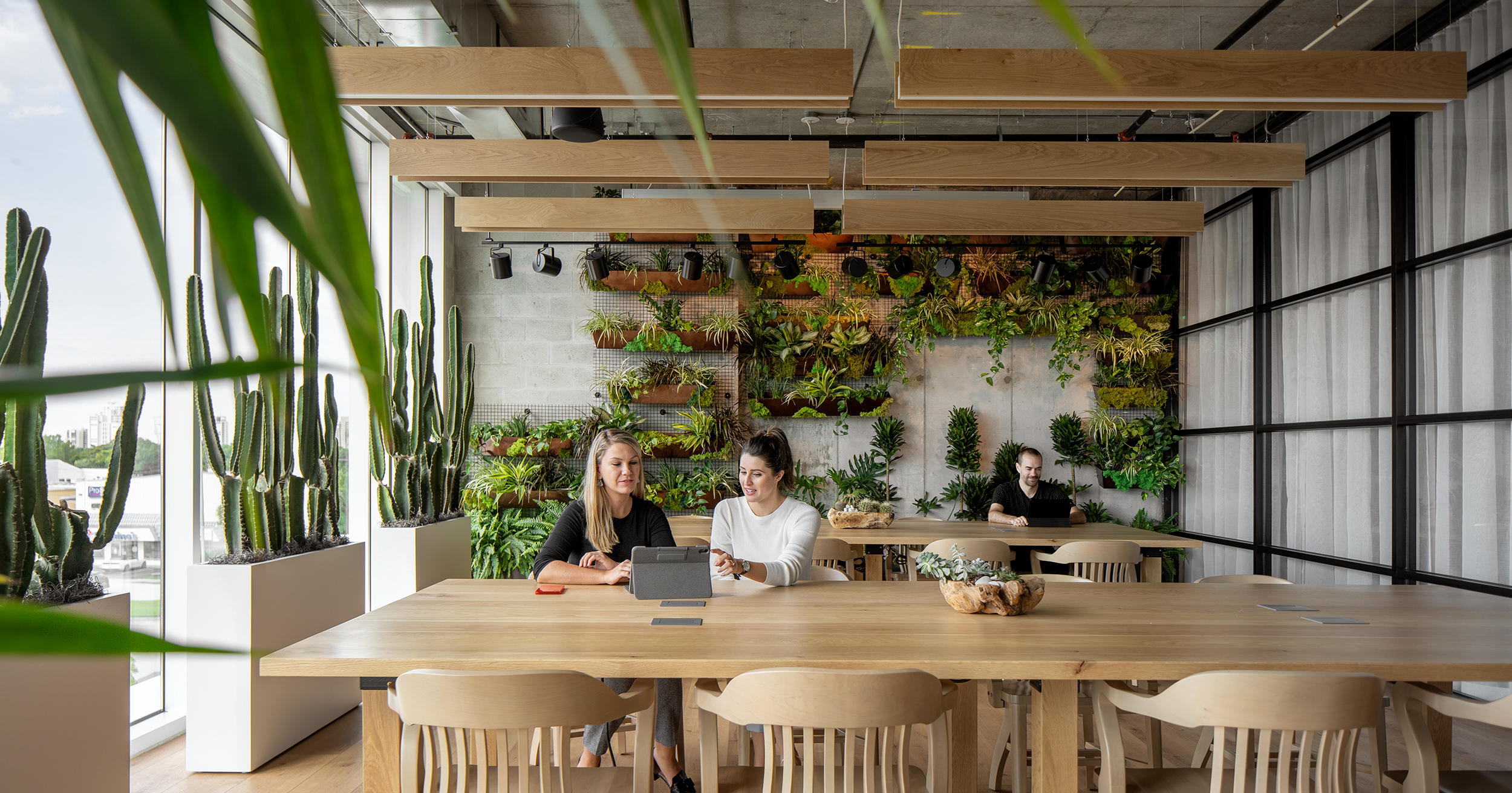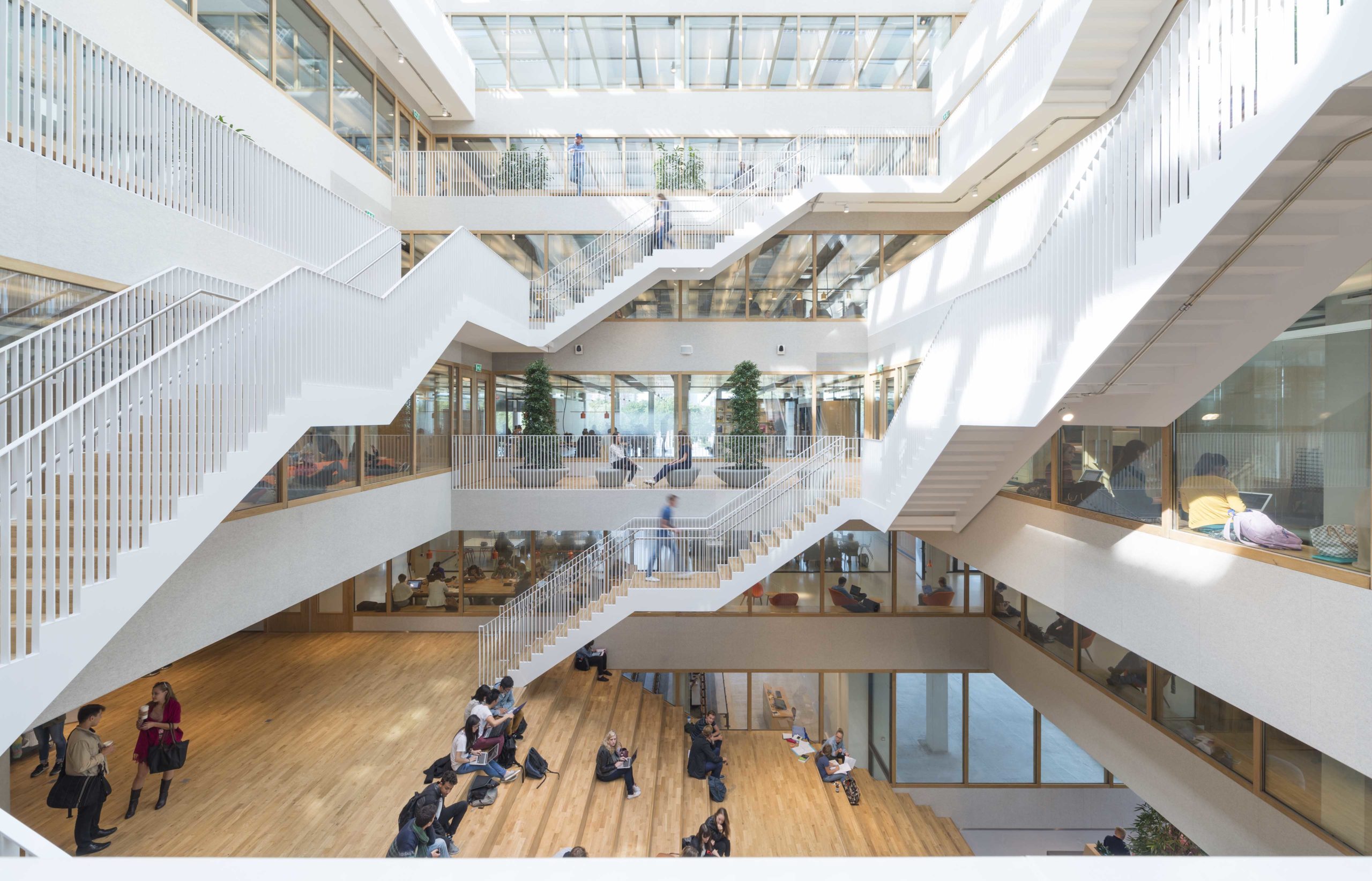STICK SNAP STACK – The project explores an alternative construction system based on a unique stacking mechanism. We learn from how birds stack sticks, beavers use branches, and other animal agents build their structures in sustainable manners. Without using bonding agents or permanent joint methods, the ‘stacking’ prototype focuses on the unique unit block design and reversible interlocking mechanism. Three identical wood sticks are snapped into a 3D-printed centerpiece, which can generate angles for stacking orientation. An 8-block rhombohedral lattice module can grow to achieve geometric freedom. Anyone can stack sticks to build a structure that can be easily disassembled for different uses, times, and locations.
Architizer chatted with Jin Young Song, Principal at Dioinno Architecture PLLC, to learn more about this project.
Architizer: What inspired the initial concept for your design?
Jin Young Song: The project was inspired by the simplicity of stacking and weaving by animal agents who can build a complex but incredibly sustainable structure. Nature repurposes available materials (twigs, mud, rocks) while humans build new products for construction. Nature builds around the surroundings, optimizing for function (lighting, ventilation, water), while human structures dictate nature and customize the environment to suit the construction. While the agents in nature such as ants and bees are much less capable individually than humans, their collective ability is highly intelligent, sustainable, and energy-efficient. This project explores the simplicity of the stacking action using smart blocks, learning from nature to challenge the culture of the carbon-intensive construction industry.

© DIOINNO ARCHITECTURE PLLC

© DIOINNO ARCHITECTURE PLLC
This project won in the 10th Annual A+Awards! What do you believe are the standout components that made your project win?
Within the given budget, the 5.5-meter-tall structure had to travel from the USA to South Korea for the thematic exhibition at the Seoul Biennale of Architecture and Urbanism (directed by Dominique Perrault). To overcome the conventional challenge of shipping and labor costs, we aimed to consider full reconfigurability, easy assembly and disassembly, and transportation from the initial stage. The blocks are designed to be disassembled into three sticks and one centerpiece. Sticks are identical to all blocks for cost-efficient cutting. The centerpieces allow for an organic geometry based on the embedded angles, which is 3D printed using recyclable PETG filaments. The 5.5m tall and 2.5m wide pavilion structure was successfully shipped in four normal-size check-in luggage, installed on-site, moved and re-installed in another site, and traveled back to the USA all by one person.

© DIOINNO ARCHITECTURE PLLC

© DIOINNO ARCHITECTURE PLLC
What was the greatest design challenge you faced during the project, and how did you navigate it?
Within the given budget, the 5.5-meter-tall structure had to travel from the USA to South Korea for the thematic exhibition at the Seoul Biennale of Architecture and Urbanism (directed by Dominique Perraul). To overcome the conventional challenge of the shipping and labor costs for the construction, we aimed to consider full reconfigurability, easy assembly and disassembly, and transportation from the initial stage. The blocks are designed to be disassembled into three sticks and one center piece. Sticks are identical to all blocks for cost-efficient cutting. The center pieces allow for an organic geometry based on the embedded angle in the geometry, which is 3D printed using recycleable PETG filaments. The 5.5m tall and 2.5m wide pavilion structure was successfully shipped in four normal sized check-in luggages, installed on site, moved and re-installed in another site, and traveled back

© DIOINNO ARCHITECTURE PLLC

© DIOINNO ARCHITECTURE PLLC
How did the context of your project — environmental, social or cultural — influence your design?
While globalization and consumer culture are homogenizing our built environment, cities also celebrate the heterogeneous desires from diverse people. In the tension between cultural homogenization and heterogenization, “permanent structures” are challenged by temporary and functional spaces. Temporary seatings, theaters, cafes, and markets appear and disappear in contemporary cities. Despite the short lifespan, significant public activities are developing as major urban experiences. Although the construction industry has developed temporary structures using modular metal framing, the execution is not widely accessible to the public. Cities need more accessible and reconfigurable construction methods to support the culture of temporary placemaking. Our prototype aims to frame “stacking” as one of the most fundamental methods to build a structure in a radically easy and accessible manner.

© DIOINNO ARCHITECTURE PLLC

© DIOINNO ARCHITECTURE PLLC
How important was sustainability as a design criteria as you worked on this project?
Individual buildings can be smart in sustainability measurement. However, the collective practice of the construction industry is not smart in the middle of the climate crisis. For future manufacturing and carbon-neutral construction methods, the design intelligence of the block design and the aggregation mechanism is critical so that we allow the robot-activated action can be dramatically simple and coordinated. The network of robot fabricators can do efficient construction. This new possibility opens up a radically sustainable future based on a new time scale of construction and deconstruction, resilient building performance, and reconfigurability of space use.

© DIOINNO ARCHITECTURE PLLC

© DIOINNO ARCHITECTURE PLLC
How do you imagine this project influencing your work in the future?
We will continue to study the reconfigurability of structures activated by novel stacking methods, which contributes to the broader sustainability of the built environment. The learning is not only for the flexible structural reconfiguration per dynamic human programs but also for the resilient solutions to the sites with disaster events where conventional methods are not effective. In particular, we believe the intelligence of nature-inspired stacking will integrate with future systems of robotic collaboration.
For more on STICK SNAP STACK, please visit the in-depth project page on Architizer.





 STICK SNAP STACK
STICK SNAP STACK 


